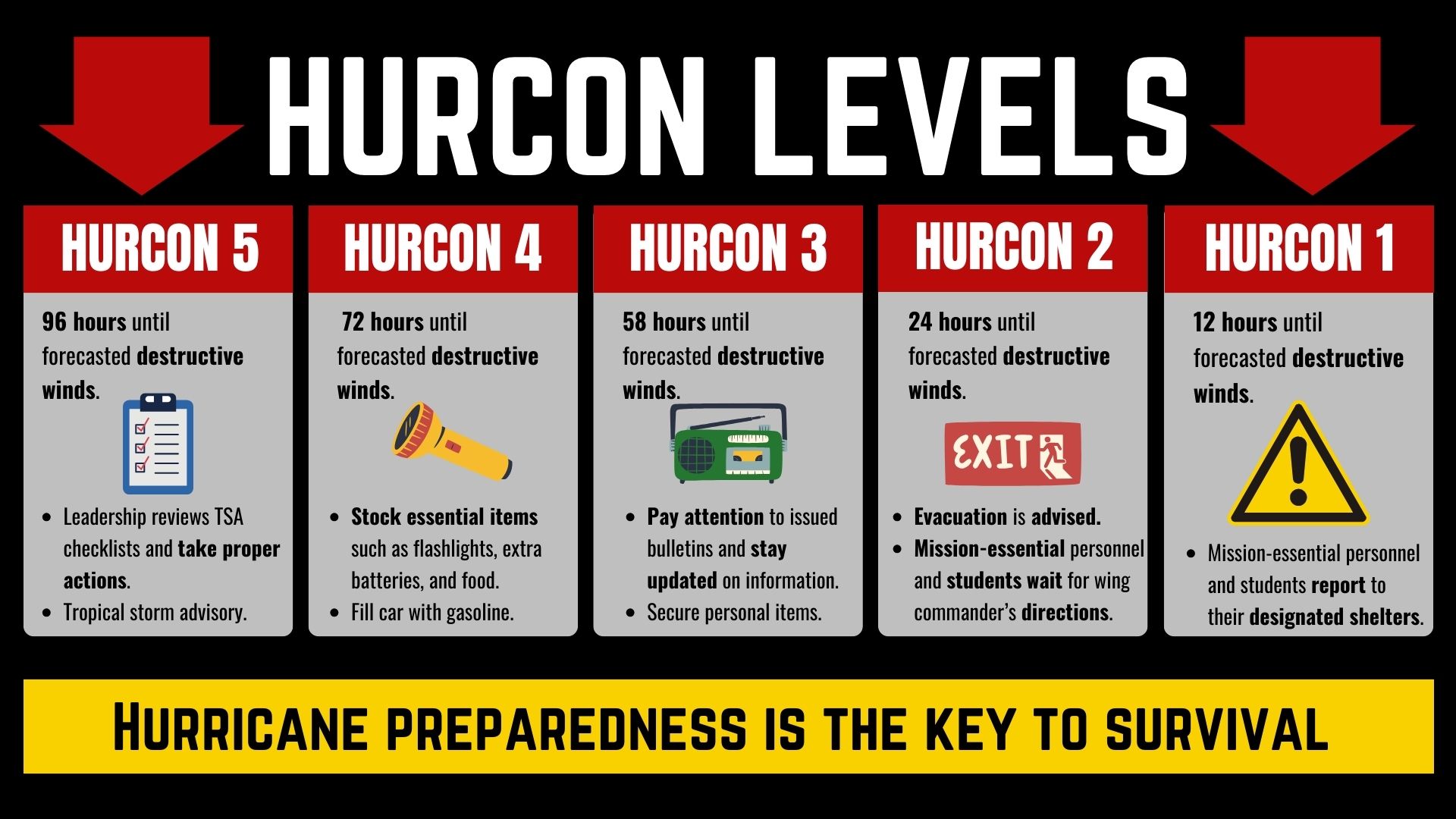
HURCON 5: Indicates surface winds in excess of 58 mph (50 knots) could arrive within 96 hours.
HURCON 4: Indicates surface winds in excess of 58 mph (50 knots) could arrive within 72 hours.
HURCON 3: Indicates surface winds in excess of 58 mph could arrive within 48 hours.
HURCON 2: Indicates surface winds in excess of 58 mph could arrive within 24 hours.
HURCON 1: Indicates surface winds in excess of 58 mph could arrive within 12 hours.
HURCON 1C: Caution: Winds of 40-57 mph/35-49 knots sustained are occurring.
HURCON 1E: Emergency: Winds of 58 mph/50 knots sustained and/or gusts of 69 mph/60 kts or greater are occurring. All outside activity is strictly prohibited.
HURCON 1R: Recovery: Destructive winds have subsided and are no longer forecast to occur; survey and work crews are permitted to determine the extent of the damage and to establish safe zones around hazards (e.g. downed power lines, unstable structures). Non-essential personnel are asked to remain indoors.